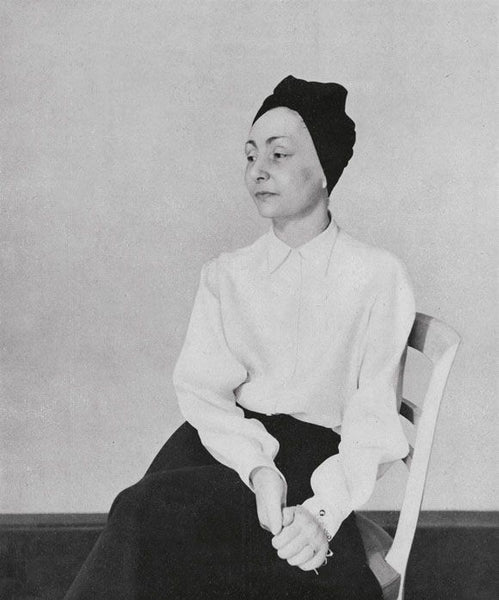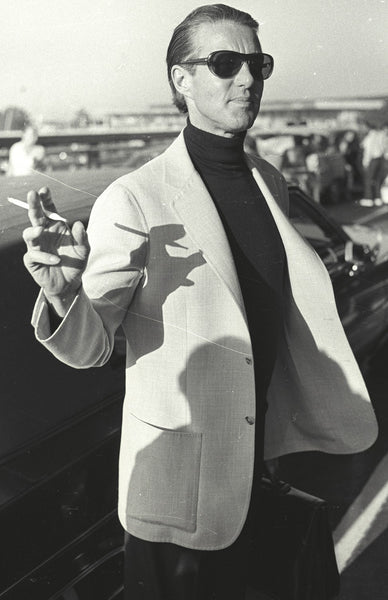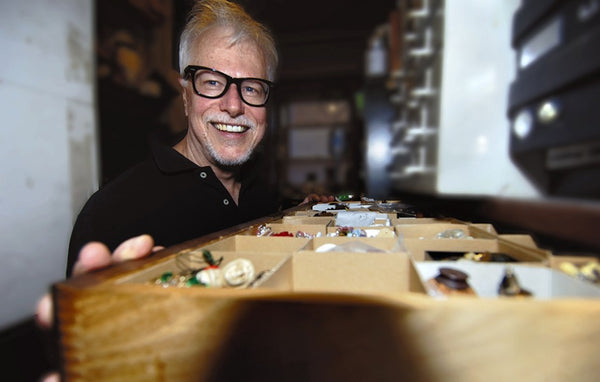Designer Spotlight: Hanae Mori

After graduating with a degree in Japanese Literature from Tokyo’s Woman’s Christian University, Hanae Mori married her husband Ken Mori, whose family owned a textile mill. She began taking classes at a dressmaking school, honing her skills. In 1951, at the age of 26 and shortly after delivering her first child, Mori opened her fashion house.

1972 Moyra Swan; 1970 Ritsuko Kai
Mori cut her teeth making costumes during the golden age of the post-war Japanese film industry. She designed for over 300 movies, and throughout her career she would return to her roots and create costumes for operas, Kabuki theatre, ballets, and musicals including Madame Butterfly, Elektra, Cinderella, and Evita. Her early work in costume would later inform the theatricality, drama, and larger-than-life designs she would go on to create.
As a young woman, Mori was wowed by the American wives of occupying GI’s and how they would have bolts of cloth drapes over themselves during dress fittings to create a three dimensional pattern that would yield to their forms rather than using a flat pattern, which was typical of Japanese clothing. In 1961 Mori traveled to Paris as a client seeking out France’s premier couturiers including Hubert de Givenchy, Marc Bohan, Pierre Cardin, and Coco Chanel. The couturiers in Paris took this draping to the next level.
Mori returned to Japan invigorated. She studied the techniques she observed, intending to innovate her craft, and applied what she learned to her trade. Four years later, in 1965, Mori was invited to present her first ready-to-wear collection in New York. The show, dubbed “East to West,” was a success, leading her pieces to be sold at Neiman Marcus that same year.

1967, 1967, 1968
Success continued for Mori. In 1969 she partnered with Shiseido, releasing her first fragrance, in 1970 she opened her first stateside boutique at the Waldorf Astoria in New York city, and in 1975, at the behest of Princess Grace, Mori held a fashion show in Monaco, and on her way back, she held her first show in Paris.

1975, CO Goldstein Museum of Design
In 1977 Mori opened a haute couture showroom in Paris on Montaigne Avenue; she was embraced by the Parisian fashion industry, and admitted to the Chambre Syndicale de la Couture Parisienne that same year, becoming the first Asian couturier to belong to the illustrious organization.

1970, CO SFO Museum
During the 1970s, Mori designed three sets of uniforms for Japan Airlines (one set included a miniskirt that was the subject of much controversy!); she made sure the stewardesses were as sharply dressed as the jet setters they were transporting. Mori also designed the uniforms for Japan’s 1994 Olympic team.
Mori stayed strong in the 1980s and 1990s, creating the gorgeous, silken pieces she is best known for. She set herself apart from her Japanese contemporaries, Yohji Yamamoto and Rei Kawabuko, who were deconstructionists interested in emphasizing androgyny and geometric forms.

The butterfly was her greatest source of inspiration, and was reflective of her choice of prints, love of nature motifs, and use of soft and silken materials. Throughout her career, Mori used a mix of fabrics and patterns with a distinctly Japanese aesthetic, combining them with western silhouettes and techniques. Her use of saturated colors, cherry blossoms, kabuki - inspired designs, and calligraphy set her apart from her contemporaries, particularly with regards to how they were considered outside of her home country - Mori was introducing her remixed interpretation of traditional Japanese aesthetics to an international audience who enthusiastically devoured it!
Mori retired in 2004. She has been awarded the Croix de Chevalier des Arts et Lettres (1984), the Croix la Légion d'honneur (1989) and has been designated a Person of Cultural Merit by the Japanese government (1989).
Clients include Princess Grace of Monaco, Crown princess Masako of Japan (she made her wedding gown!), Hilary Clinton, and Nancy Reagan.

1966, CO Hiroji Kubota
Nicole Maria Willis 1.4.19
Also in Adore MRS. Couture

Designer Spotlight: Madame Gres

Designer Spotlight: Roy Halston Frowick
Halston was thrown into the limelight when Jacqueline Kennedy wore his pillbox hat to John F. Kennedy’s inauguration. Soon Halston expanded into women’s wear, creating both couture and ready-to-wear fashion catering to the fashionable and elite jet set. Halston also accepted the honor of designing the 1976 US Olympic team uniforms, redesigned Braniff Airlines’ uniforms in 1977, and created uniforms for the New York Police Department and the Girl Scouts in 1978.
Halston was innovative, using slinky knit material and ultrasuedes, and introducing a halter dress design that elongated a wearer’s silhouette. He pioneered the sensual and soft draped looks associated with disco and his beloved Studio 54.

